The presence of hot water in the tap is a long-standing affair. Worse when we notice its absence, that is, we immediately feel incredible discomfort. Therefore, we often think about the question of how to provide warm water in a house, apartment or cottage.
In apartment buildings, this function is more or less established by the central supply of hot water. But, so-called preventive measures or accidents often arise, in which you have to get out of the position of someone who knows how.
In homes where there is no central heating, this issue is even more relevant. So, in a private house or in the country, you have to install an individual water heater. In all such situations, the question remains which water heater to choose as an alternative to central water heating?
Many people know that there are modern and affordable devices for heating water: flowing and storage subspecies. It remains to find out under what conditions which water heater is better flowing or storage?
Types of Water Heaters
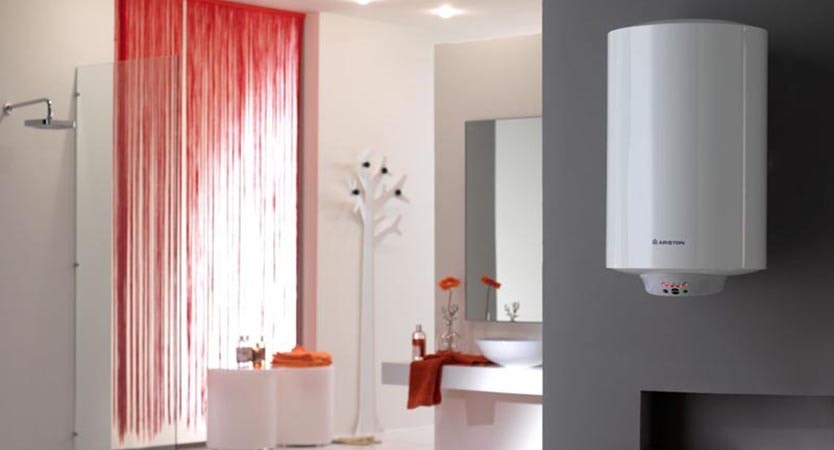
Depending on the principle of operation of the installation, water heaters are distinguished:
- Flowing, from the name it is clear that in this case there is heating of water on the go. This type of heater provides the fastest heating of water, but its temperature depends on many factors (inlet water temperature, device power).
- Cumulative, - water is collected in a tank (tank) in which stagnant water is heated and its set temperature is maintained.
![]() See also - How to choose a water heater for the apartment: expert advice
See also - How to choose a water heater for the apartment: expert advice
Flowing - types, principle of operation, pros and cons
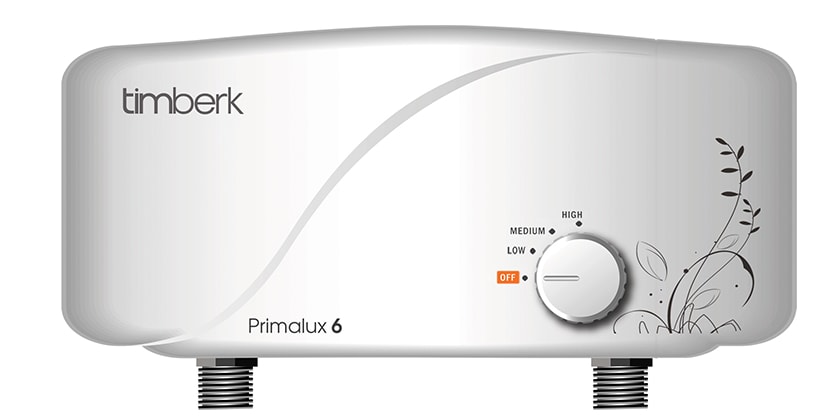
Instantaneous water heaters are quite popular. They are easy to install and are small-sized installations. This type is divided into types:
Gas, heating and water occur due to the burning of natural gas. The device provides a metal radiator that heats up from the gas burner and heats the water to a predetermined temperature.
Electric, work from inclusion to the power supply network. The installation contains a built-in heating element, which heats metal pipes to a high temperature and instantly heats the water flowing into them. The temperature of the tap water depends on the inlet temperature. Of great importance is the time of year. In summer, the water will be hotter, in winter - colder. For a quality heating system, the power of the installation itself matters, and then the price.
Pros:
- Small-sized.
- Instantly heat the water.
- Uninterrupted supply of hot water.
- Easy installation of electrical (only connecting the flow of cold water and connecting to the mains).
- Gas installations are low cost and powerful.
Minuses:
- Electric heaters of low power are not able to provide the temperature of the water at the desired level. In the summer, it perfectly maintains the required water temperature for domestic use. But in winter, when the water at the inlet is low in temperature, it warms up less.
- The installation of a gas appliance requires the supervision of a special service and access to the chimney.
- For efficient gas operation, a strong pressure of water is required.
Both types of water heaters work "on the go" and accordingly do not provide tanks. They are usually installed on each crane separately. There are powerful models that can provide hot water from a tap, even under conditions of strong pressure and regardless of the time of year.
See also:
- The 6 Best Hotpoint-Ariston Water Heaters
- The 8 best Zanussi water heaters of the year
- The 8 Best Thermex Water Heaters of the year
- 10 best Timberk water heaters of the year
- 10 best Gorenje water heaters of the year
Cumulative - the principle of work, pros and cons
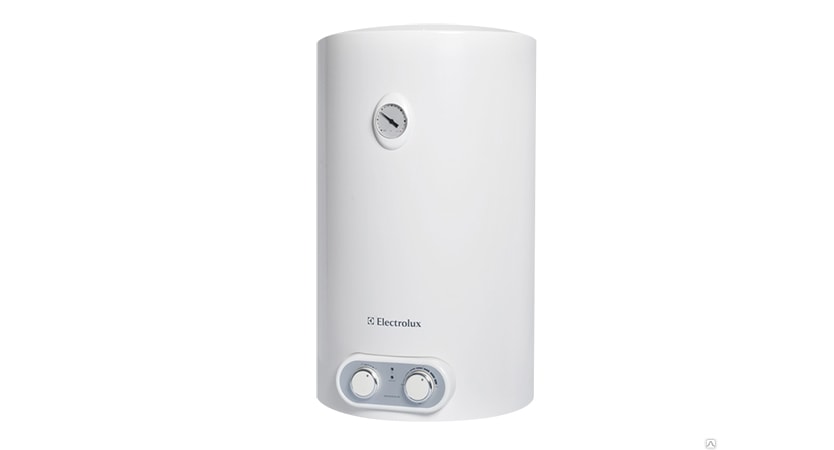
Such a water heating device operates in a cumulative manner. Provides a tank (different in volume) that holds water. The heating device is a heating element. For work, it is necessary to connect a cold water pipe to the device and turn it on in the mains.
Water is drawn into the tank, heated and maintained at the set temperature. Used as needed. Automatically fills and ensures the constant availability of a certain volume of water of the desired temperature.
The following varieties of this type of water heaters exist:
- Direct heating boilers - heating is due to the heater; for this, a connection to the mains is required.
- Indirect heating boilers - mainly operate from central heat supply. And in the summer, when the heating is turned off, the water is heated with the help of a heating element.
Pros:
- Ability to connect more than one water outlet. Depending on the volume of the boiler.
- Low power.
- Profitability of gas types of installations.
- It can be simultaneously used as a heating source
Minuses:
- Overall tanks.
- A big waste of time for heating water.
Comparison of heaters by basic characteristics
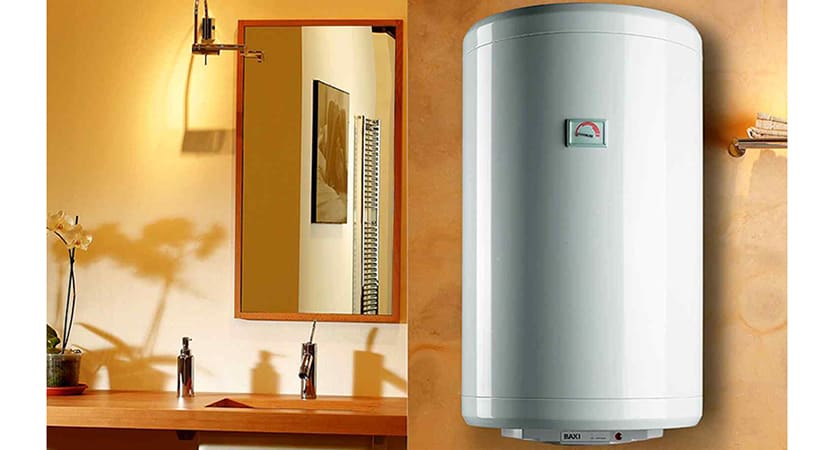
All water heaters are different types, have their pros and cons. Among the reviews, both types have good recommendations. But still, what is the difference between a storage water heater and a flowing one? To choose the right device, you should analyze your requirements for it and technical capabilities. Consider the main differences that more clearly characterize both types of water heaters.
Performance
The most important factor when choosing this type of installation. After all, how effective and in what quantity can heat water each of them depends on our choice. Of course, it matters where it is planned to be installed. In particular, for a country house, where the consumption of hot water is only periodic, and at the level of basic household needs, there is no need to install a powerful and capacious system.
Cumulative, allows you to collect the required amount of water and heat it to the maximum permitted temperature. Here it does not matter: pressure, inlet water temperature and the like.
Instantaneous, heats the water instantly, but we are talking about very powerful modern devices. Indeed, for efficient lightning-fast heating of water, a fair amount of power is required. Basically, low-power devices are not able to quickly heat up a strong flow of water, especially when the water inlet is low temperature.
Electricity costs
The accumulative type of heating system uses electricity modestly, but constantly. After all, the process of heating and maintaining the proper water temperature is continuous.
Flowing consumes electricity only when the tap is opened.However, the costs will be many times greater, albeit in a short time.
In summary, both systems have approximately the same costs.
Installation, assembly, dimensions
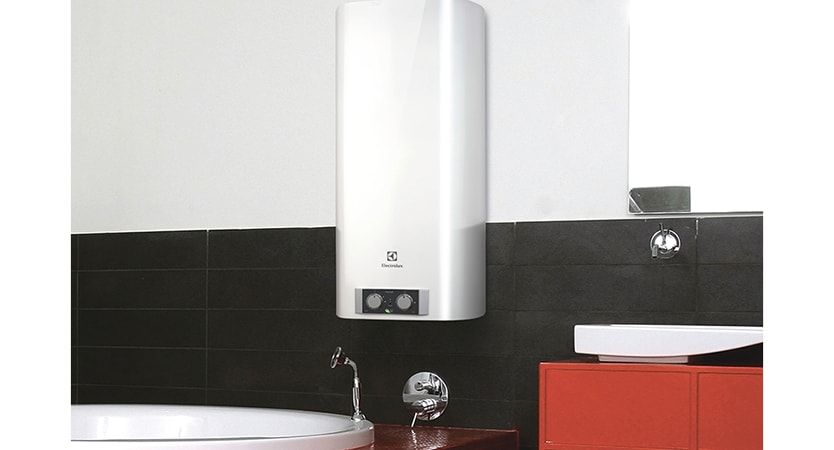
To install the storage device, you should choose the right place for mounting, namely the wall. Not recommended for plasterboard or wood flooring. The best place is a load-bearing wall made of brick or concrete. To connect to the power supply network, just plug it into the socket.
Installation of a flow-through model does not require special and costly installation. But, the essential point is the correct connection to the mains.
It is recommended to use the services of a specialist in this field. Indeed, to install an electric flow heater, you should lay a separate RCD line and install grounding.
Operational comfort
If necessary, the storage water heater will provide water heating to a temperature of 95 degrees. Or, on the contrary, it is possible to set a low border, if necessary, summer water.
The flow-through can mainly provide the average water temperature. Only high power models can output water up to 75 degrees. In most, its temperature will not exceed 55 degrees. And then, provided that it is used for one tap. If one more point is attached, then with the simultaneous use of water, its temperature will be halved.
Care and service life
The storage device will last an average of 5 years. In some cases, the operational period can reach 10 years. But the stated terms of work are possible only under the condition of periodic preventive cleaning of debris and scale.
Flowing does not require special attention to care, except for the periodic reading of the heater. Its service life is 10 and more years.
Safe operation
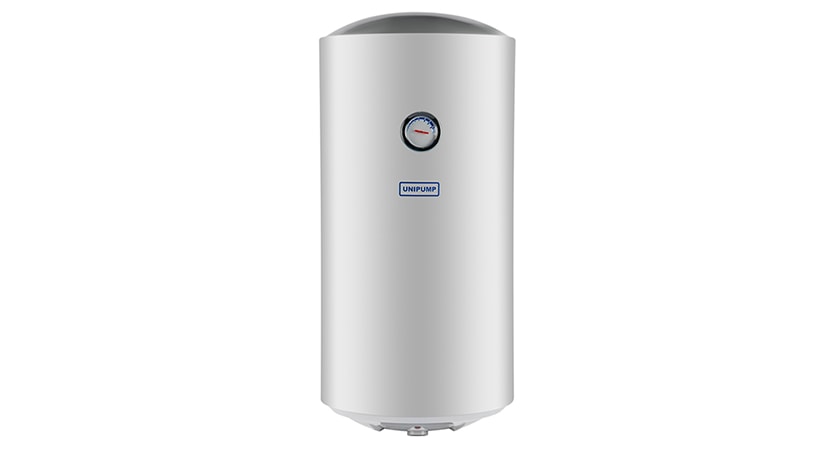
The storage device should be put into operation and subsequently used in accordance with the instructions for it.
The flowing type is somewhat whimsical. Has a high power, usually with a three phase system. Therefore, it requires separate wiring and grounding in order to avoid negative consequences.
Output
Each of these types of devices are worthy options. Depending on the needs, scope of application - this or that option will be appropriate. It doesn't take a long time to understand the basic principles of each of them. It can be noted with confidence that storage systems are efficient and powerful enough to be used as the main and constant source of warm water.
Flowing, this is ideal for a summer cottage or other premises where water costs are insignificant and variable compared to normal bit use.
In any case, for the right choice, you need to focus on your own needs and capabilities. And using these data, you can easily choose an efficient water heater for your room.
See also:

